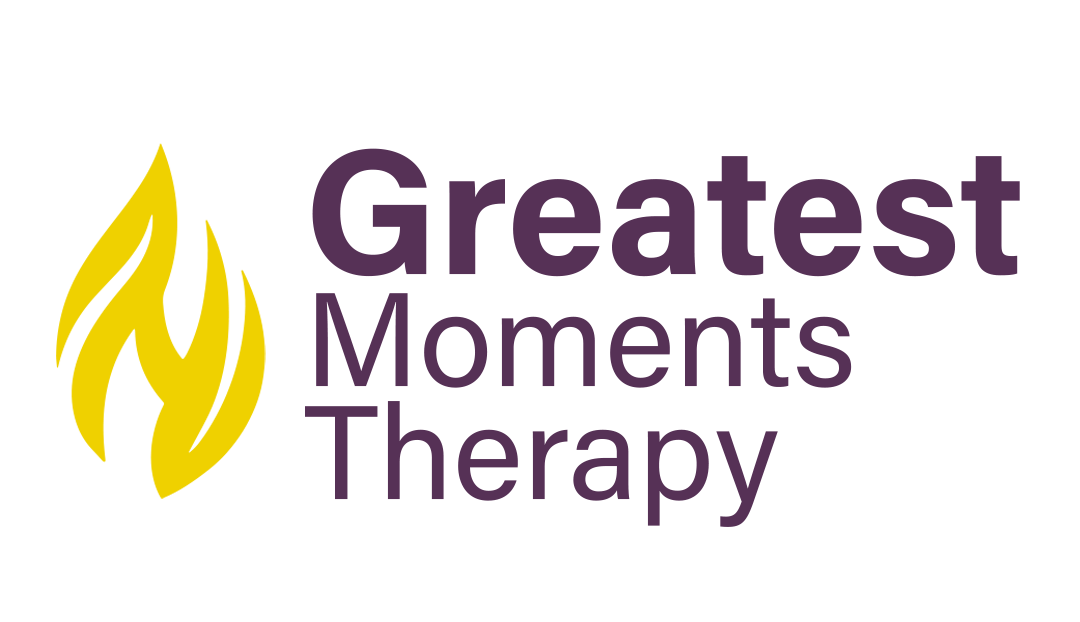EMDR and Non-Verbal LD
Eye Movement Desensitization Reprocessing and Tantrums in Non-Verbal Learning Disability

Meet Emma
Emma is an 8-year-old with a big heart and an even bigger imagination. She loves making up stories and can talk for hours about her favorite books. But when things don’t go how she expects—like when the schedule changes at school—she feels like everything is spinning out of control. Sometimes, it gets so overwhelming that she cries, hides under her desk, or yells, even though she doesn’t want to.
Her parents and teachers know she’s trying her best, but they also know how much these meltdowns upset her. They want to help her feel safer and more in control, so Emma starts EMDR therapy.
What is EMDR?
EMDR (Eye Movement Desensitization and Reprocessing) is a powerful therapy that helps people process difficult memories and reduce anxiety. It’s beneficial for individuals with Nonverbal Learning Disability (NVLD), who often experience heightened anxiety due to challenges with social cues, problem-solving, and sensory overload.
What is NVLD?
People with NVLD are typically influential with words but may struggle with nonverbal communication, reading social situations, or adapting to change. This can lead to a lot of stress and anxiety, especially when past experiences—like social rejection, bullying, or feeling overwhelmed—continue to trigger intense emotional reactions.
How does EMDR work?
That’s where EMDR comes in. Instead of just talking through fears, EMDR helps the brain reprocess these challenging experiences in a way that makes them feel less overwhelming. The therapist guides the person through bilateral stimulation (like moving their eyes back and forth or tapping gently on their hands), which helps the brain reorganize how it holds onto stressful memories. Over time, those memories lose their emotional charge, and the person feels more in control.
For someone with NVLD, EMDR can be really effective because:
It doesn’t rely only on talking—sometimes words aren’t enough to shift deep emotional patterns.
It helps calm the body’s automatic anxiety response, which can be extra strong in NVLD.
It’s structured and predictable, which can be comforting for someone who prefers clear guidance.
Alternative methods (like tapping instead of eye movements) can be used to fit sensory preferences.
With EMDR, past struggles don’t have to keep triggering the same fear and anxiety. Instead, they become part of a person’s story—without controlling how they feel in the present. It’s a way to help the brain find relief and make room for more confidence and calm.
Here is what Emma’s EMDR therapy would look like.
Step 1: Creating a Safe, Comfortable Space
Before anything else, Emma’s therapist helps her feel safe. They sit in a cozy room with a soft blanket and fidget toys. The therapist explains EMDR in a way that makes sense to Emma:
"Sometimes, when something stressful happens, it’s like a big, scary wave crashing over you. Your brain holds onto that feeling, so the wave returns the next time something similar happens—even if you don’t need it anymore."
"We’re going to help your brain put that wave in a safe, calm place so it doesn’t keep knocking you over."
Emma can choose how they do this—she can watch the therapist’s fingers move side to side, feel gentle taps on her hands or knees, or hold small buzzers that softly vibrate in each hand. She picks gentle knee taps because they feel soothing.
Step 2: Finding a Target Memory or Bodily sensation
The therapist asks Emma about a time she felt really overwhelmed at school. She remembers a day when the teacher changed the schedule at the last minute. She had been counting on recess, and when it was suddenly replaced with an assembly, she felt trapped and panicked. Her chest got tight, her face got hot, and she ended up crying in front of everyone.
When asked how big that feeling is now, Emma stretches her arms as wide as possible and says, "SO BIG! Like a 10 out of 10!"
Then, the therapist asks, "What does that moment make you believe about yourself?"
Emma looks down and whispers, "That I’m bad."
Hearing that breaks the therapist’s heart because she knows Emma isn’t evil; she just feels stuck. So together, they think of a new belief Emma wants to feel instead. They come up with:
"I can handle changes, even when they feel hard."
Step 3: Processing the Bodily Sensation/ Memory
As Emma thinks about that tough day, the therapist gently taps her knees back and forth slowly and flexibly.
At first, Emma still feels the same tightness in her chest. But after a while, something surprising happens—she remembers she wasn’t the only one upset. "Oh yeah," she says suddenly. "Some other kids got mad, too. It wasn’t just me."
After a few more rounds of tapping, Emma realizes something else: The teacher wasn’t trying to be mean. She was just doing her job.
The tight, scary feeling in her body starts to loosen gradually. When they check in again, Emma says the memory feels more like a "4 out of 10" instead of a "10." She still remembers it, but it feels less sharp or painful.
Step 4: Strengthening a Positive Belief
Now that the memory isn’t so overwhelming, Emma and her therapist focus on the new belief:
"I can handle changes, even when they feel hard."
The therapist taps again while Emma imagines herself in a similar situation—but this time, instead of panicking, she takes a deep breath. Maybe she squeezes her hands into fists and then lets go, or she asks her teacher, "Can you remind me what’s happening next?"
After a few more rounds of tapping, Emma smiles. "I think I can handle it a little better next time."
Step 5: Closing with Calm
To wrap up, the therapist helps Emma feel peaceful before she leaves. They imagine her favorite calming place—snuggled in a blanket fort with her stuffed bunny, listening to the sound of rain. She takes a deep breath and smiles.
The Impact
Over the next few weeks, Emma keeps practicing. The next time her teacher changes the schedule, she still feels a little nervous—but she remembers her deep breaths, and instead of a meltdown, she asks, "Can you tell me what’s happening after the assembly?"
Those big, crashing waves of emotion gradually start to feel smaller. They don’t knock her down anymore. And that’s a huge deal.
Using Bilateral Stimulation at Home & School
To help Emma manage emotions outside of therapy, her parents and teachers use simple bilateral stimulation techniques:
At Home:
- Butterfly Hug – Emma crosses her arms over her chest and gently taps her shoulders, one side at a time.
- Walking & Talking – When she feels anxious, a parent walks with her, encouraging left-right movement while talking through feelings.
- Bilateral Music – Wearing headphones, she listens to calming music that alternates between ears.
- Tapping Game – A parent gently taps her hands in a rhythmic pattern while she breathes deeply.
At School:
- Desk Taps – Emma taps her fingers back and forth on her desk when feeling overwhelmed.
- Gentle Side-to-Side Movements – gentle/subtle swinging on a swing or rocking side to side in her chair helps reset her nervous system.
- Fidget Tools – A small, squeezable ball passed between hands can provide calming bilateral stimulation.
- Marching in Place – Taking a short movement break by marching quietly in place helps her regulate emotions.
By using these simple techniques, Emma gains confidence in handling challenges—one small step at a time.
Reach out to learn more drj@jeltova.com.



